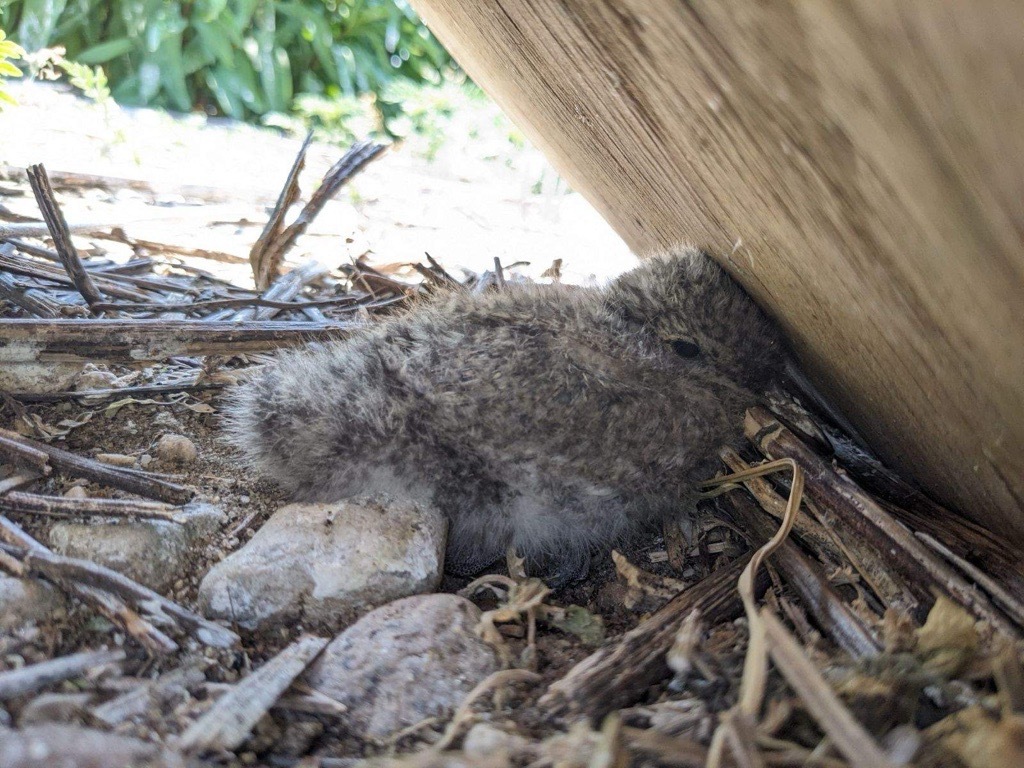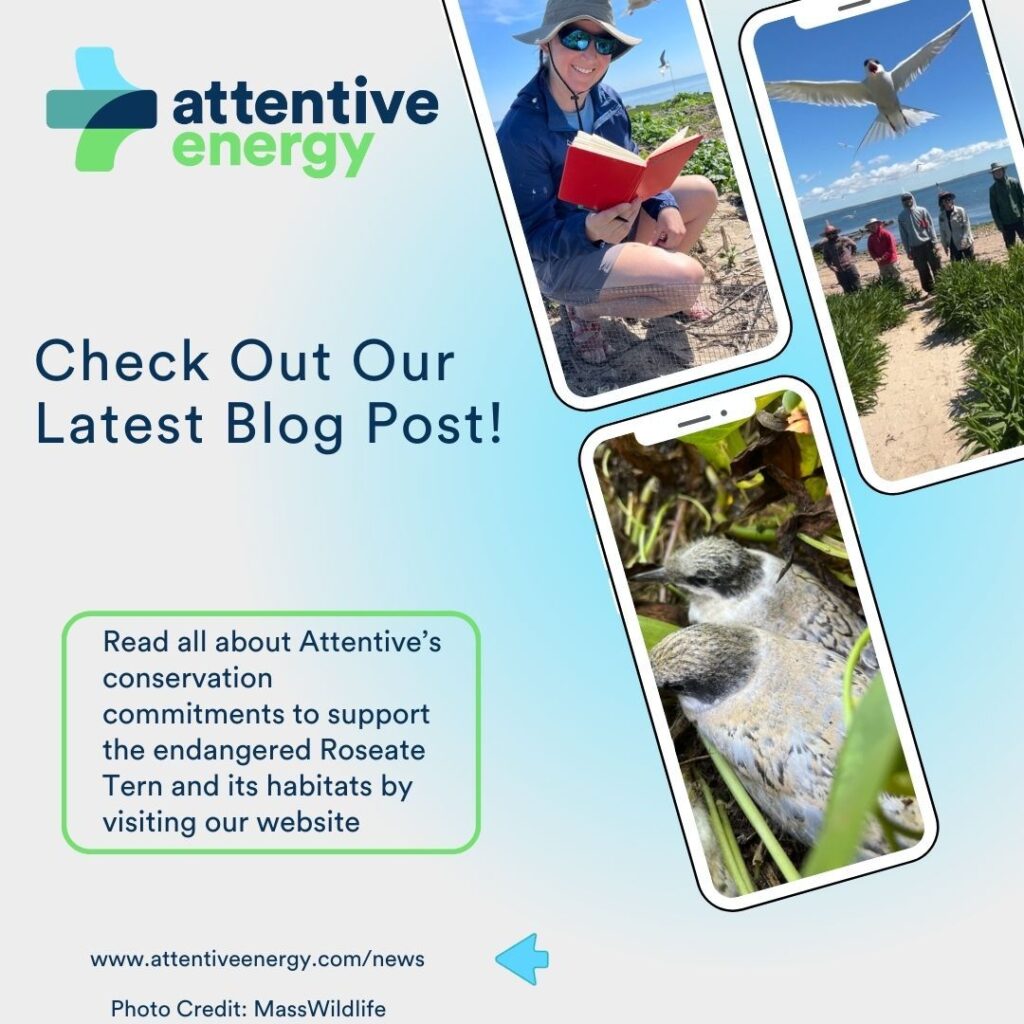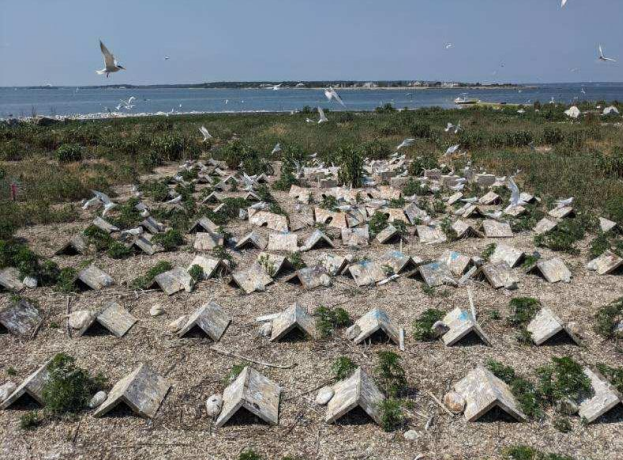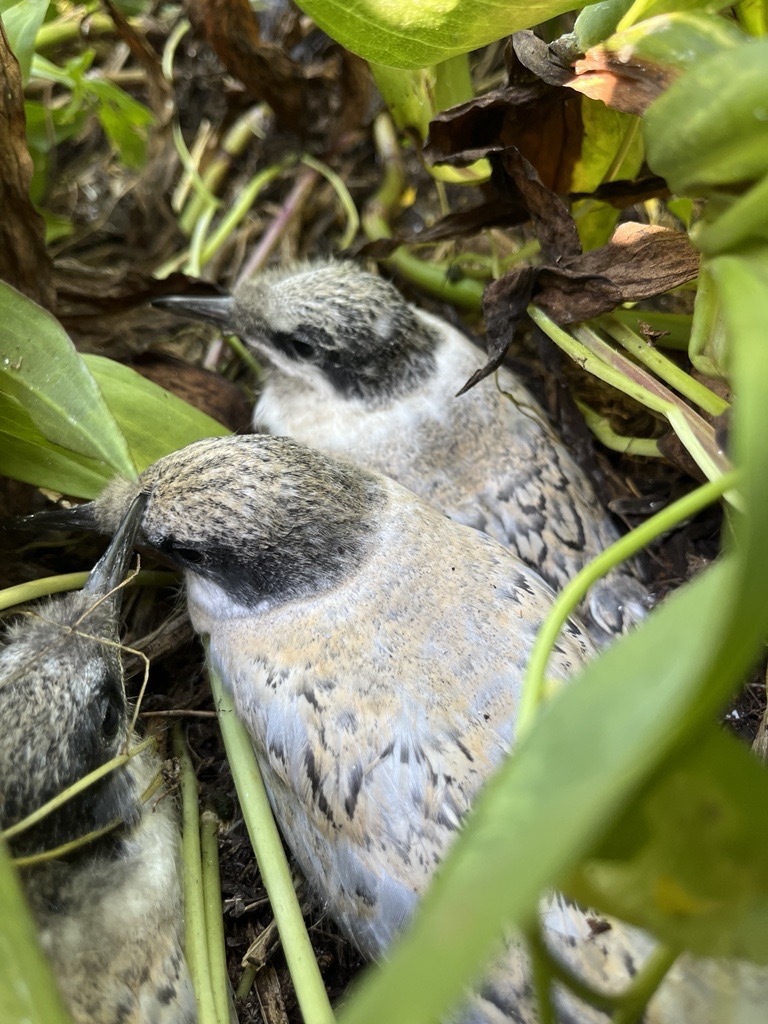Source: Attentive Energy
By Emily Helldorfer, Communications Specialist
The Roseate Tern, a small and graceful seabird, is facing a tough battle for survival. Federally listed as endangered in the Northwest Atlantic, these birds make a remarkable journey each year, migrating from South America to the offshore islands of the Northeastern U.S. to nest. Their nesting sites are few and far between, with less than 20 locations from Atlantic Canada to New York. Alarmingly, about 90% of the population is concentrated at just three major sites: Bird and Ram Islands in Buzzards Bay, MA, and Great Gull Island, NY. This makes the protection and management of these breeding colonies critical. A Roseate Tern chick, approximately 10 days old, under the protective cover of a nest box. Photo by Samuel Meigs, MassWildlife.

Without proper management and steady funding for conservation programs, the number of nesting birds and their productivity can suffer. That is why earlier this year, the Attentive Energy Two project (AE2) partnered with the Massachusetts Division of Fisheries and Wildlife (MassWildlife) to boost the abundance and productivity of Roseate Terns. This collaboration focused on Bird Island in Marion and Ram Island in Mattapoisett, with Attentive Energy providing funds used to hire seasonal field biologists and purchase necessary supplies and equipment for conservation activities.


“It may seem odd for a New Jersey offshore wind project to fund Roseate Tern conservation efforts in Massachusetts, yet this endangered species forages across a wide area in the New York Bight including off the coast of New Jersey. It is believed Roseate Terns haven’t bred in New Jersey since 1980, and we wanted to do our part to help recover the species and hopefully expand their range,” said Dr. Paul Phifer, Permitting and Development Director of AE2.
Protecting and improving nesting habitat is a top priority for the species. Each spring, MassWildlife staff clear dead vegetation from the previous year and manage new growth to ensure terns can access their nesting areas. They also build and deploy nest boxes, which provide safe spaces for about a third of the Roseate Terns. This spring, on Bird Island, staff moved tons of stone displaced by severe winter storms to prevent tern chicks from wandering into dangerous areas. Additionally, they posted signs to protect the colonies and educate visitors about the birds. Roseate Terns prefer to nest under cover, including vegetation, boulders, and artificial structures. At nesting sites on Ram and Bird Islands, MassWildlife builds and installs nest boxes to increase the amount available of nesting habitat and enhance the survival of tern chicks. Photo by Samuel Meigs, MassWildlife.

Understanding the status of endangered species requires meticulous tracking. In early June, MassWildlife staff and volunteers conducted island-wide nest censuses, tallying every Roseate Tern nest. Preliminary estimates show record numbers: 2,383 pairs on Bird Island and 1,203 pairs on Ram Island. These figures, along with 18 pairs on nearby Penikese Island, represent the highest number of Roseate Terns ever recorded in Buzzards Bay overall. However, severe erosion on Ram Island over the winter reduced available habitat, causing many terns to shift to Bird Island. This highlights the importance of maintaining suitable habitats at multiple sites.
To gauge productivity, staff monitored about 125 nests on each island, tracking nest success and chick survival. While hatching success was strong and the first-hatched chicks fared well, second-hatched chicks struggled due to limited prey availability. Despite these challenges, both islands fledged about one chick per pair, which is average for these sites.

A Roseate Tern nest under seaside goldenrod, which provides excellent cover.Photo by Carolyn Mostello, MassWildlife. Nearly fully-feathered Roseate Tern chicks, almost ready to fledge.Photo by Brock Dalton, MassWildlife.
To further boost productivity, MassWildlife employed innovative methods to limit nocturnal predation by Black-crowned Night Herons, which have caused significant damage on Ram Island in recent years. These new techniques, piloted in 2023, have shown promise in protecting vulnerable chicks and eggs from predation.
“We are grateful for Attentive Energy’s support this season,” says Carolyn Mostello, MassWildlife’s Coastal Waterbird Biologist. “The additional funding has allowed us to expand our ability to monitor and protect Roseate Terns. Partnerships like this are vital for protecting rare species and ensuring they thrive for generations to come.”
The efforts of MassWildlife and added capacity funded by Attentive Energy are making a tangible difference in the conservation of Roseate Terns. By protecting and managing their habitats, tracking populations, and employing innovative methods to improve productivity, we can hope for a brighter future for these beautiful seabirds. With continued support, the Roseate Tern can thrive once again in the Northwest Atlantic. 2024 field staff conducting a tern census on Bird Island. Photo by Carolyn Mostello, MassWildlife.









